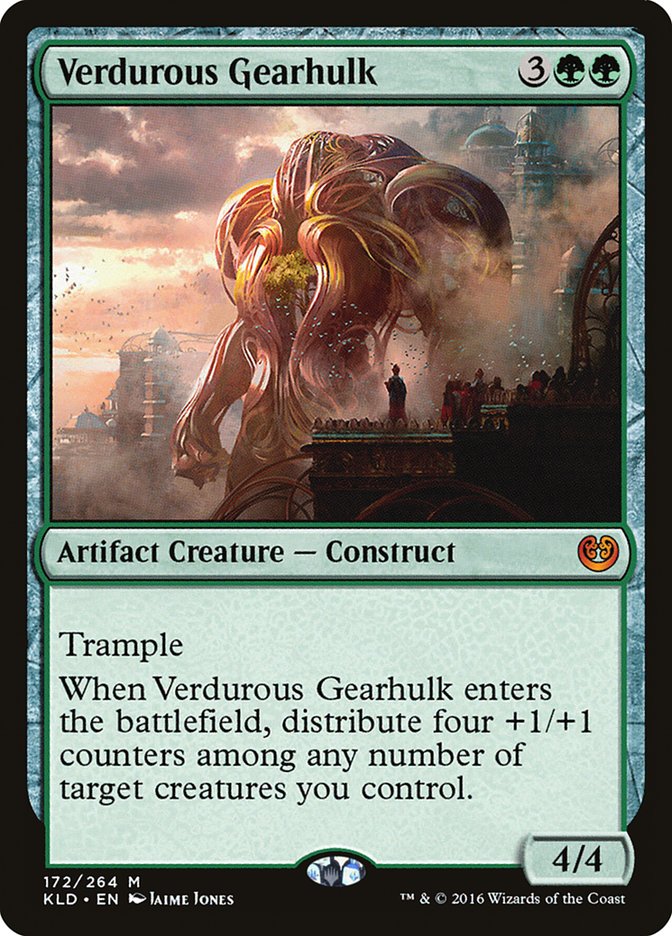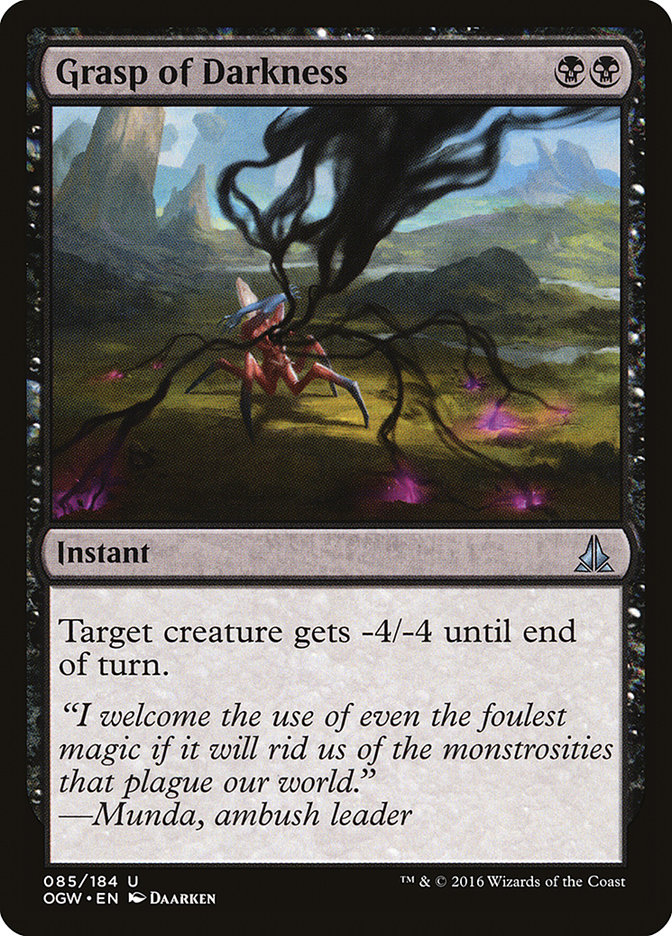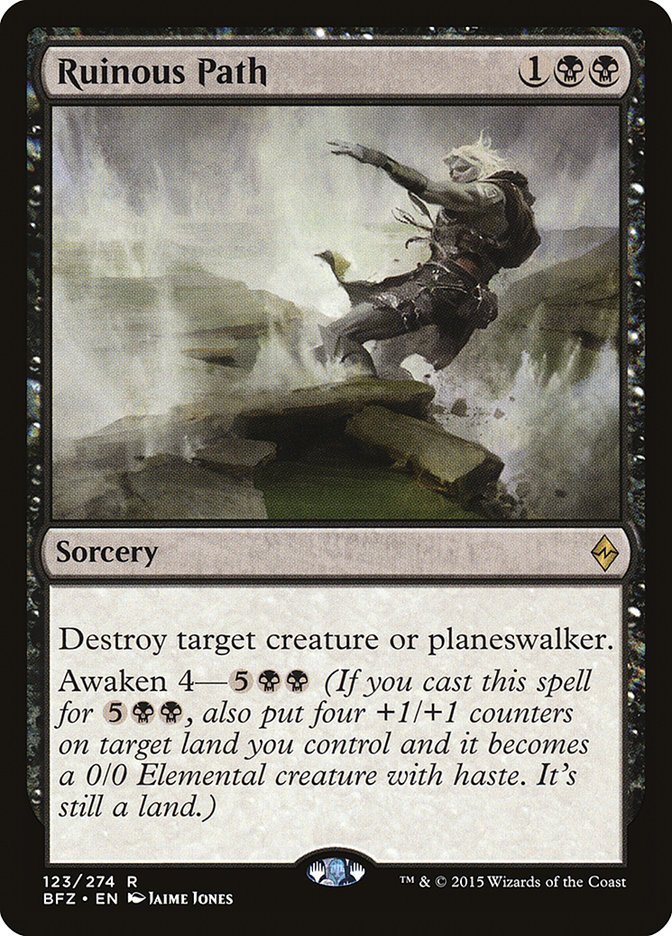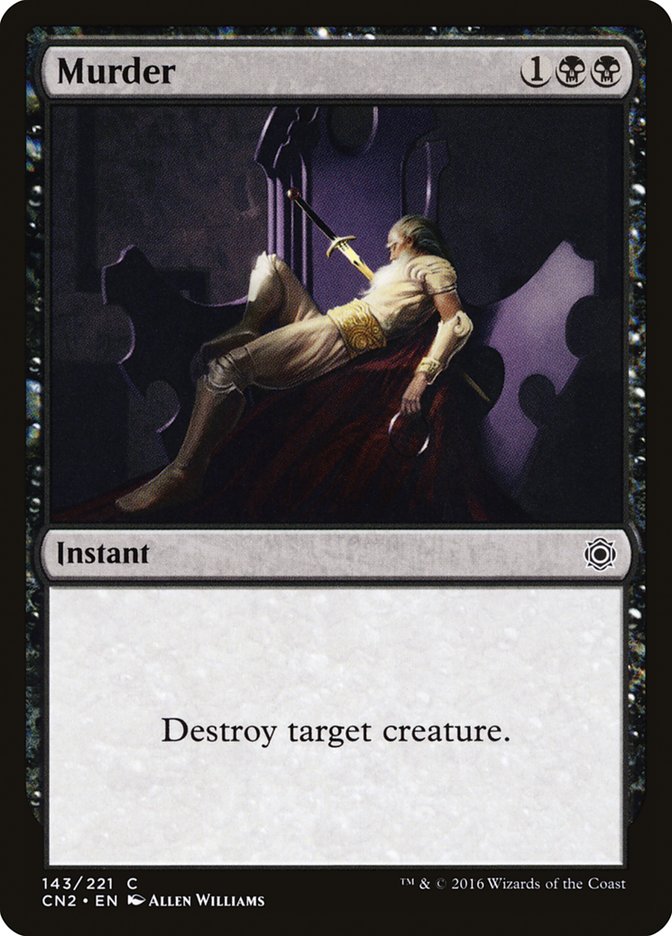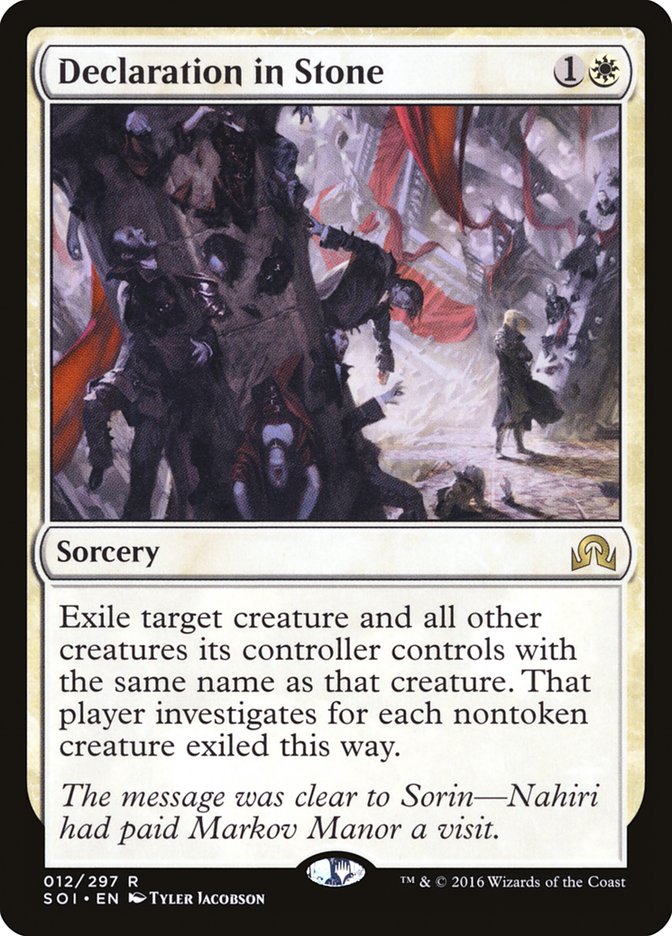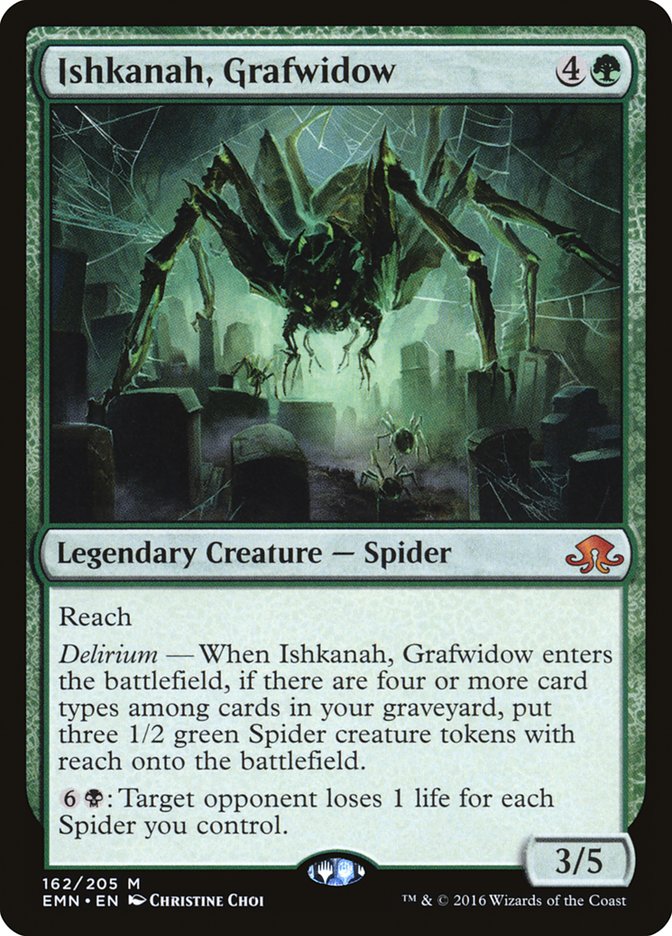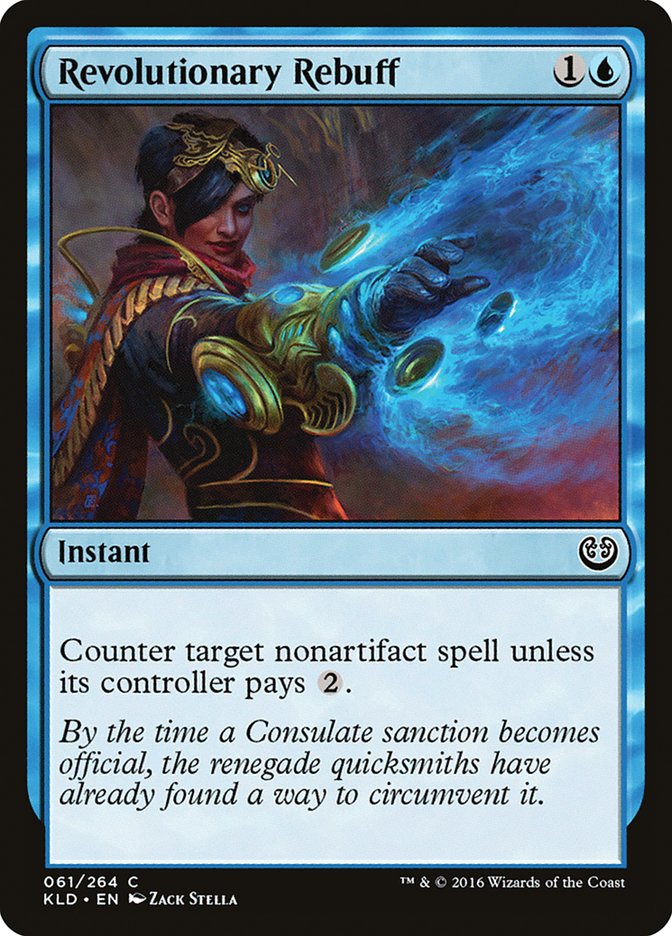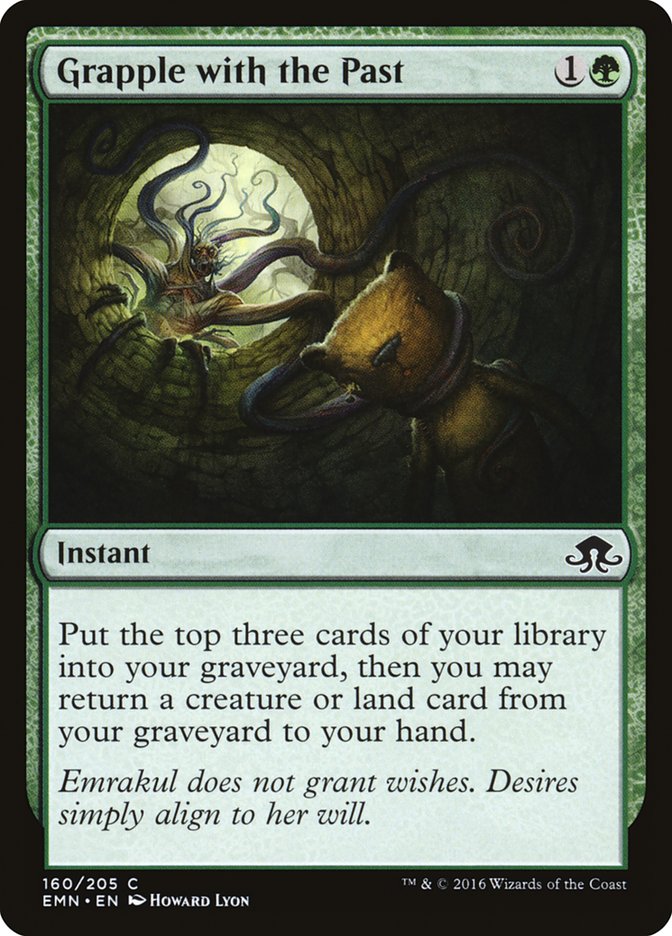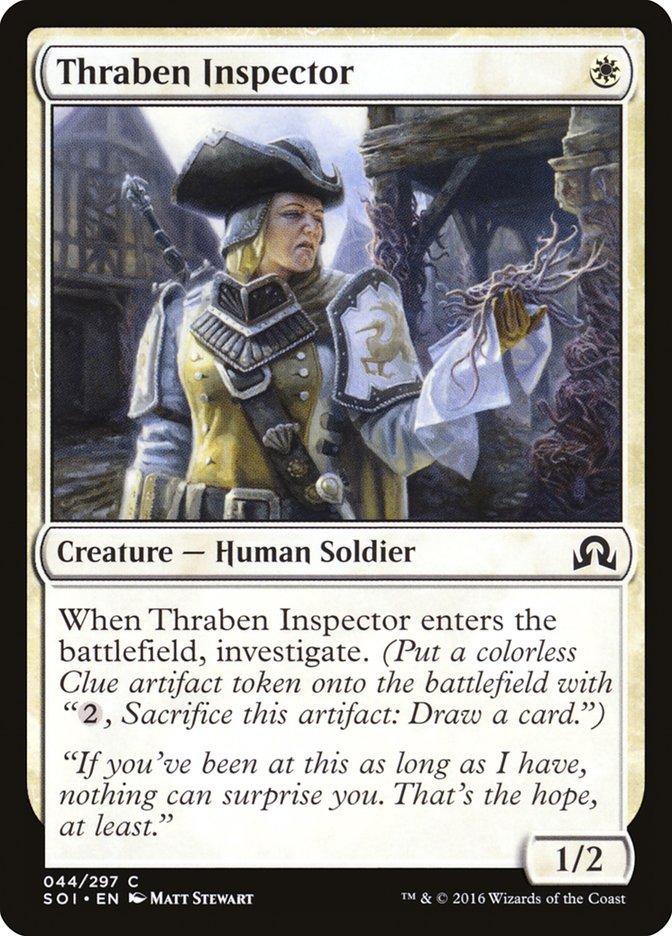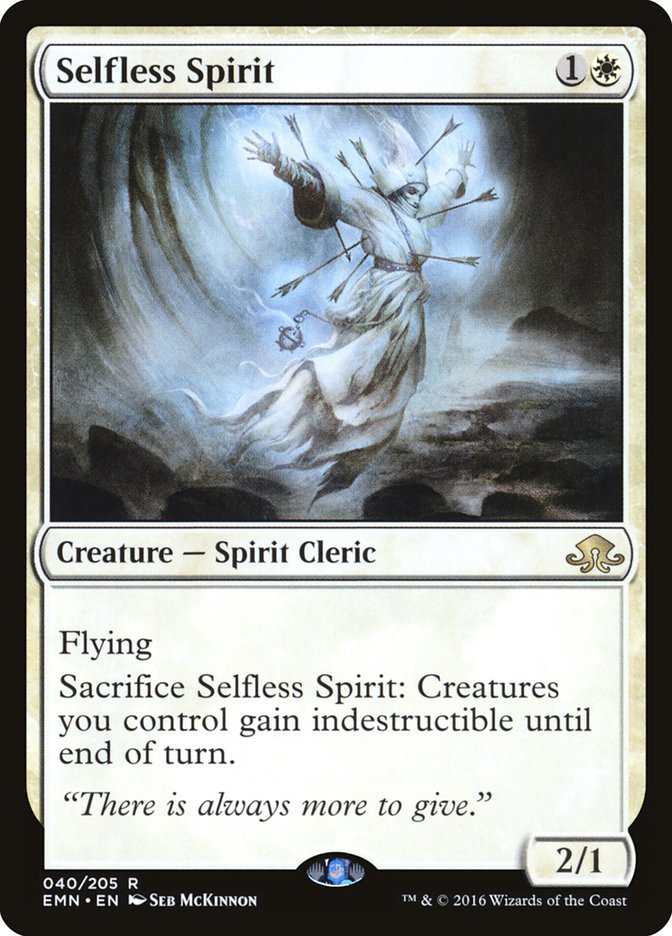Last weekend’s Modern Open in Columbus did not go well for me. An early exit left me scrambling to find a deck to play in the Classics the next day, and with #SCGKNOX coming up next week, playing Standard was the obvious choice.
With so many Modern events recently, I hadn’t played Standard since the Pro Tour, but fortunately the format is narrow enough that my choice was clear. B/G Delirium and W/U Flash have dominated the format for weeks now and I can’t imagine playing anything else would give me a better chance of winning.
Creatures (15)
- 2 Pilgrim's Eye
- 2 Kalitas, Traitor of Ghet
- 2 Tireless Tracker
- 1 Emrakul, the Promised End
- 3 Ishkanah, Grafwidow
- 4 Grim Flayer
- 1 Noxious Gearhulk
Planeswalkers (4)
Lands (23)
Spells (18)

Creatures (21)
- 3 Reflector Mage
- 3 Archangel Avacyn
- 4 Thraben Inspector
- 1 Bruna, the Fading Light
- 1 Gisela, the Broken Blade
- 2 Thalia's Lancers
- 4 Spell Queller
- 3 Selfless Spirit
Planeswalkers (4)
Lands (25)
- 11 Plains
- 6 Island
- 4 Prairie Stream
- 4 Port Town
Spells (10)

The difficulty of the decision is in deciding between them. They are both midrange decks that can excel in every phase of the game, which is why they have been so dominant. Every other deck in the format has significant holes, while these decks’ weaknesses are comparatively minor. The only major difference between the two is that W/U Flash shades toward the aggressive end of the spectrum where B/G Delirium shades toward the controlling end.
And so ended the debate for my deck choice. If you’ve followed me at all over the last few years, you know I can’t resist beating down, so Smuggler’s Copter and Gideon, Ally of Zendikar beat out Ishkanah, Grafwidow and Emrakul, the Promised End pretty convincingly. And to make matters easy, Bardley Narson was as prepared as a Boy Scout with his entire Standard collection. Don’t you just love it when a plan comes together?
My list was stock and my games weren’t particularly insightful, so I’m not going to go over them here. Instead I want to talk about my impressions of the deck and its standing relative to B/G Delirium moving forward. Given that I had a solid 6-1-1 record, you might assume that my experience was positive, but in reality I came away quite down on W/U Flash as a deck. I only played against B/G once and it was the less common aggressive variant with Smuggler’s Copter and Verdurous Gearhulk. Unsurprisingly, that was where I took my one loss.
Good game.
After this tournament, I am of the opinion that B/G Delirium is operating on another power level, and does so with surprising consistency. I certainly plan on playing the deck this weekend, despite my distaste for blocking, but in a final attempt to convince myself to stick with the sweet, sweet, beats I looked over the two decks to see if I could pinpoint where the advantage for B/G lies.
What I see are four specific areas where B/G Delirium’s cards are simply better than W/U Flash’s: removal, stabilizers, mana, and late-game.
Removal
I noted this in a DailyDigest and it bears repeating: Grasp of Darkness is the best removal spell in Standard.
It kills nearly everything and it does so efficiently. The difference between two and three mana may not seem like much, but it is. You can use the extra mana on a Vessel of Nascency or Traverse the Ulvenwald to set up your later turns and not fall behind on tempo because your removal spell traded up on mana.
Ruinous Path and Murder are fine supplements, especially since the former answers Gideon, Ally of Zendikar, but Grasp of Darkness is the star here and one of the primary reasons B/G Delirium is the best deck in the format.
Meanwhile, W/U Flash has to make do with Stasis Snare and Declaration in Stone. These are both fine and notably both can answer any creature, but they do so at a cost. Fragmentize and Natural State are commonly played sideboard cards and the presence of Smuggler’s Copter wouldn’t be enough to warrant bringing them in, but Stasis Snare changes that. Losing your Stasis Snare for one mana can be completely devastating, so I’d rather not expose myself to it.
Declaration in Stone has two faults. One, it’s a sorcery. This means it naturally plays against the reactive flash game you have with counterspells, Spell Queller, and Archangel Avacyn. You’d rather be able to pass the turn and only commit your mana once your opponent has made their play for the turn and you need instant-speed removal to do that.
Second, the card advantage it gives up makes it weak when you’re behind, so it pigeonholes you into a more aggressive gameplan. A lot of the time that will be fine, since you want to be aggressive, but the hallmark of midrange decks is flexibility, so you’d rather keep your options open.
There are some advantages to the white removal. Declaration in Stone handles Spider tokens from Ishkanah, Grafwidow well and the exile effects can help keep your opponent off delirium while blunting the effectiveness of their Grapple with the Pasts and Liliana, the Last Hopes. Those are minor edges, though, when compared to their raw efficiency as removal spells.
Stabilizers
This category isn’t as clear, so allow me to explain.
Both B/G Delirium and W/U Flash feature prominent five-drops that serve to stabilize the battlefield when behind. These are, of course, Ishkanah, Grafwidow and Archangel Avacyn. Both are very powerful, but in the heads-up decision, I’m going for the Spiders.
Archangel Avacyn has the higher potential. Transforming it with Selfless Spirit can be game-breaking and even a clean ambush can turn a game around quickly. But the key word there is “clean.” Losing your Archangel Avacyn to a removal spell like, I don’t know…Grasp of Darkness is a tempo loss that you cannot afford to take when behind.
The threat of a removal spell then makes you wary to set up these big turns with Archangel Avacyn, because any hard work put into it can be too easily undone. As a result, you often don’t get maximum value out of one of your key cards, even when your opponent doesn’t have the answer.
Once again, the stabilizer for B/G Delirium is cleaner. Getting delirium has proven to be fairly easy, so Ishkanah, Grafwidow is a consistent threat on turn 5 that immediately halts most aggression. Even against a Declaration in Stone, you are left with a 3/5 that will discourage everything short of Gideon, Ally of Zendikar from attacking.
Ishkanah, Grafwidow is the main reason that W/U Flash decks have incorporated Revolutionary Rebuff and Spell Shrivel, since counterspells are the best way to fight it. Obviously trading your two- or three-mana counterspell for their five mana threat is great and will lead to some easy victories, but lining up the cards properly is difficult unless you establish a significant lead in the early turns. If the B/G Delirium player is on the play, then tapping out for Gideon, Ally of Zendikar becomes risky, and creating a significant clock without it is difficult in the face of black’s removal.
The existence of these weak counterspells only serves to underscore the reality that Ishkanah, Grafwidow is a huge problem for W/U Flash, and the same cannot be said for Archangel Avacyn and B/G Delirium.
Mana
This one is pretty clear. Creature-lands and fastlands are just flat-out better than Battle lands and Shadow lands. Neither deck has many issues fixing its colors, but Shadow and Battle lands lead to more awkward draws when you don’t have enough basics to power them. It’s nice to have the potential for all your lands entering the battlefield untapped, but in reality W/U Flash won’t have that many fewer lands entering tapped than B/G Delirium, and the latter gets a creature for their trouble.
Fast lands are awkward topdecks when you are a mana short for a key spell, but the same is true of Shadow lands. How do the enemy color pairs get both the good two-color lands? This one just isn’t fair.
And to top it all off, B/G Delirium has access to Traverse the Ulvenwald, a powerful early fixer that lets you cut your land count without fear of mana screw and turns into a powerful tutor so your deck is more dense in the late-game with good draws. W/U Flash has Smuggler’s Copter to help avoid flood but lacks any true mana sink beyond a Westvale Abbey or two, which is not exactly exciting.
Mana issues often get blamed on variance, but it’s important to see how much control we have over them in the deck design process. Decks that don’t fall victim to these issues very often have a significant edge.
Late-Game
This one seems obvious with W/U Flash being the more aggressive deck and B/G Delirium being more controlling. Of course it has the better late-game while simultaneously being disadvantaged in the early-game.
The point I want to make here is that B/G Delirium gains a significant late-game edge without devoting much space in deck design. The late-game for B/G Delirium is built around one card: Emrakul, the Promised End. But the presence of Traverse the Ulvenwald and the delirium enablers (Grapple with the Past, Vessel of Nascency, and Liliana, the Last Hope) mean that you only need a single copy of Emrakul to be able to find it consistently by turn 8 or 10.
The rest of those cards are cards you are already playing, so you’re really only dedicating the one spot to your end-game plan. And it’s the best end-game in the format. That kind of efficiency lets you devote more space to getting through the early-game unscathed. So even though I agree that W/U Flash is advantaged in the early-game, its advantage is more than made up for by B/G Delirium’s advantage later on.
W/U Flash has to play a lot of cheap, low-power creatures to enable its strongest early-game card: Smuggler’s Copter. And while Smuggler’s Copter is a powerful enough card to make the effort worthwhile, it does come with consequences. You have less space in your deck for removal, and a draw filled with Thraben Inspectors and Selfless Spirits is unlikely to lead anywhere good.
I’m sure to draw the ire of W/U Flash devotees everywhere, and I don’t mean to say that W/U Flash is a bad deck per se. It has very impressive results and can certainly hold its own even against B/G Delirium. But W/U Flash depends on getting its cards to line up properly. You need to come out quickly so you can hold up your flash threats and then carefully line up your cards against theirs.
It’s an effective strategy when things go well, but it’s inherently unstable. One stumble or missed answer and the entire house of cards falls apart. If you ever get into a game state where both players are treading water while trading cards, then B/G Delirium will eventually come out ahead on the exchanges or cast Emrakul, the Promised End.
So I fully expect to register B/G Delirium this weekend in Knoxville. I’m trying very hard to convince myself otherwise, since it’s not my typical style of deck, but at a certain point you have to admit that one deck is the best.
Of course, now that I’ve written this entire article, I’m sure I’ll do something embarrassing and likely register something else. Project Jinx Myself is proceeding exactly as I have foreseen.


